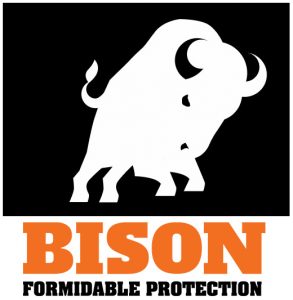Understanding the Australian standard for work boots is essential for ensuring safety and compliance in the workplace.
In this simple guide, our workwear experts have broken down what these standards entail and how they impact your choice of work boots.
What Is the Australian Standard for Work Boots?
The Australian Work Boots Standard refers to the AS/NZS 2210 series, which sets the benchmark for safety, protective, and occupational footwear in Australia and New Zealand. These standards ensure that work boots meet specific criteria to protect workers from common hazards, such as impacts, punctures, slips, and electrical risks.
| Key Features of Compliant Work Boots | The Benchmarks |
|---|---|
| Protective Toe Caps | Impact Resistance: Must withstand forces of at least 200 joules. Materials: Can be made from steel, aluminium, or composite materials. |
| Slip Resistance | Sole Design: Outsoles crafted to provide grip on various surfaces to prevent slips and falls. |
| Penetration-Resistant Midsole | Protection: Shields against sharp objects penetrating the sole. Construction: Typically includes a steel or composite plate. |
| Electrical Resistance | Antistatic Footwear: Reduces static electricity buildup. Conductive Footwear: Dissipates static electricity safely. Electrical Hazard Resistant: Insulates against electric shocks. |
| Chemical and Heat Resistance | Materials: Resistant to degradation from chemicals or high temperatures. |
The AS/NZS 2210 Series Explained
The AS/NZS 2210 series is the cornerstone of safety footwear standards in Australia and New Zealand.
This series ensures that all safety, protective, and occupational footwear meets stringent requirements to protect workers across various industries.
Below, we’ve broken down the key components of this standard.
AS/NZS 2210.1:2010 – Guide to Selection, Care, and Use of Safety Footwear
This part of the standard serves as a guide for both employers and employees. It provides:
- Hazard Assessment: Encourages identifying risks in the workplace, such as heavy falling objects, sharp materials, and slippery surfaces.
- Footwear Selection: Recommends selecting footwear based on specific workplace hazards.
- Comfort and Fit: Emphasises the importance of proper sizing to ensure comfort and maintain protective features.
- Care and Maintenance: Suggests regularly cleaning, inspecting, and storing footwear correctly to prolong its lifespan.
- User Education: Stresses the importance of understanding how to wear and maintain safety footwear properly.
AS/NZS 2210.2:2009 – Test Methods for Footwear
This section outlines the testing methods used to evaluate the safety of work boots, such as:
- Impact Resistance Test: Assesses the toe cap’s ability to withstand impact from heavy objects.
- Compression Resistance Test: Evaluates the toe cap’s performance under compression, simulating heavy loads.
- Penetration Resistance Test: Ensures the midsole prevents sharp objects from piercing the sole.
- Slip Resistance Test: Tests the outsole’s grip on different surfaces.
- Electrical Properties Test: Measures the boot’s resistance to electrical currents.
- Thermal Insulation Test: Evaluates the boot’s ability to withstand extreme temperatures.
AS/NZS 2210.3:2019 – Specification for Safety Footwear
This part specifies the minimum requirements for materials, construction, and performance:
- Material Specifications: Defines the acceptable materials for safety footwear components, ensuring durability.
- Protective Toe Caps: Details the dimensions and coverage required for toe protection.
- Heel Energy Absorption: Requires heels to absorb impact energy to reduce fatigue and injury.
- Water Resistance: Sets standards for protection against water penetration.
- Antistatic and Electrical Resistance: Establishes requirements for antistatic and electrically insulated footwear.
- Labelling: Specifies that compliant boots must include a label showing compliance with AS/NZS 2210 standards.
AS/NZS 2210.4:2019 – Specification for Occupational Footwear
This section covers occupational footwear without protective toe caps but with other safety features like:
- Slip Resistance: Ensures soles provide adequate grip to prevent slips and falls.
- Antistatic Properties: Reduces the risk of static electricity buildup.
- Resistance to Fuel Oil: Specifies resistance to degradation from fuel oils.
- Comfort Features: Highlights ergonomic design for extended wear.
AS/NZS 2210.5:2009 – Specification for Protective Footwear
This part focuses on specialised footwear for specific risks, such as:
- Chemical-Resistant Footwear: Protects against exposure to corrosive substances.
- Heat and Fire-Resistant Footwear: Withstands extreme temperatures and exposure to flames.
- Cut-Resistant Footwear: Incorporates materials like Kevlar to protect against cuts.
- Metatarsal Protection: Offers additional guards to protect the upper foot from impact.
- Dielectric Footwear: Insulates against electrical shocks for high-voltage environments.
By thoroughly understanding the components of the AS/NZS 2210 series, both employers and employees can ensure they select the right work boots that not only comply with the Australian Work Boots Standard but also offer the necessary protection for specific workplace hazards.
Selecting the Right Work Boots
Assess Workplace Hazards
Identify risks such as falling objects, sharp materials, electrical hazards, or slippery surfaces to determine which protective features are necessary.
Comfort and Fit
Proper sizing is crucial for maintaining comfort and the integrity of the protective features. Look for ergonomic designs and breathable materials for long work shifts.
Material Considerations
- Steel Toe Caps: Provide strong protection but can be heavier and conductive.
- Composite Toe Caps: Lighter and non-conductive, ideal for electrical environments.
Compliance Verification
Ensure all work boots are marked with the AS/NZS 2210 standards to verify compliance. This helps avoid subpar or unsafe products.
Employer and Employee Responsibilities
Employers
- Provision: Employers must supply appropriate safety footwear that complies with the work boots Australian Standard.
- Compliance: It’s crucial to ensure that all supplied safety footwear meets the AS/NZS 2210 standards for worker protection.
Employees
- Usage: Employees are responsible for wearing their safety boots as instructed and reporting any defects.
- Maintenance: Regular care and inspection of work boots are necessary to maintain their protective qualities.
Maintaining Your Work Boots
To maximise the lifespan and effectiveness of your work boots, follow these steps:
- Regular Cleaning: Keep your boots free from dirt and contaminants.
- Inspection: Regularly check for signs of wear or damage.
- Proper Storage: Store in a cool, dry place to prevent damage from moisture or heat.
Conclusion
Adhering to the Australian Work Boots Standard is crucial for creating a safe work environment.
By selecting the right boots and understanding these standards, you not only comply with regulations but also protect yourself from potential hazards.
For more information or assistance in choosing the right safety footwear from our huge range of work boots, feel free to get in touch with our workwear experts.


































